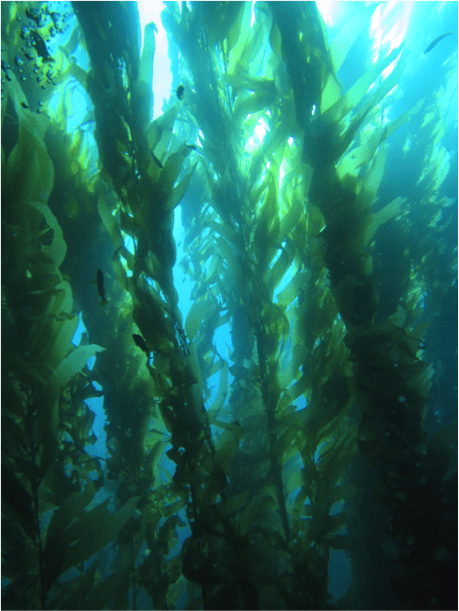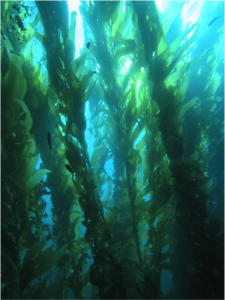
Kelp is anchored in the ocean by a root-like structure called a holdfast. During storms, or when large waves or strong currents come through, kelp can detach from its underlying substrate and begin to drift in the ocean. As the kelp floats along it often becomes entangled and forms a buoyant configuration of algae that we refer to as a kelp raft, or kelp paddy. While still anchored, kelp provides protection for fish and a is a habitat for many invertebrates such as snails, sea stars, and crabs. After the organism is uprooted, kelp rafts attract many new species adrift, while original dwellers often continue to call it home.
 As kelp rafts drift into the open ocean, they become an important resource for pelagic species of fish. Living in the open ocean, these fish can take advantage of the kelp raft as a possible food source where invertebrates and high densities of plankton may be trapped. Baitfish often school under kelp rafts for protection, and clusters of juvenile fish use this drifting habitat as a nursery. Even our largest bony fish, the mola mola, or ocean sunfish, will come to the surface where a kelp raft is present to solicit the help of cleaner fish and birds that are looking for a tasty meal to rid the massive fish of its parasites.
As kelp rafts drift into the open ocean, they become an important resource for pelagic species of fish. Living in the open ocean, these fish can take advantage of the kelp raft as a possible food source where invertebrates and high densities of plankton may be trapped. Baitfish often school under kelp rafts for protection, and clusters of juvenile fish use this drifting habitat as a nursery. Even our largest bony fish, the mola mola, or ocean sunfish, will come to the surface where a kelp raft is present to solicit the help of cleaner fish and birds that are looking for a tasty meal to rid the massive fish of its parasites.
These rafts can drift for miles across the ocean, and have even been regarded as a way for marine invertebrates and different species of algae to find new homes on nearby islands or drift to different countries. You never know what types of animals you will find in or under a kelp raft, so take a peak next time and see who made this floating ecosystem its home!
Written by: Jaclyn Lucas


